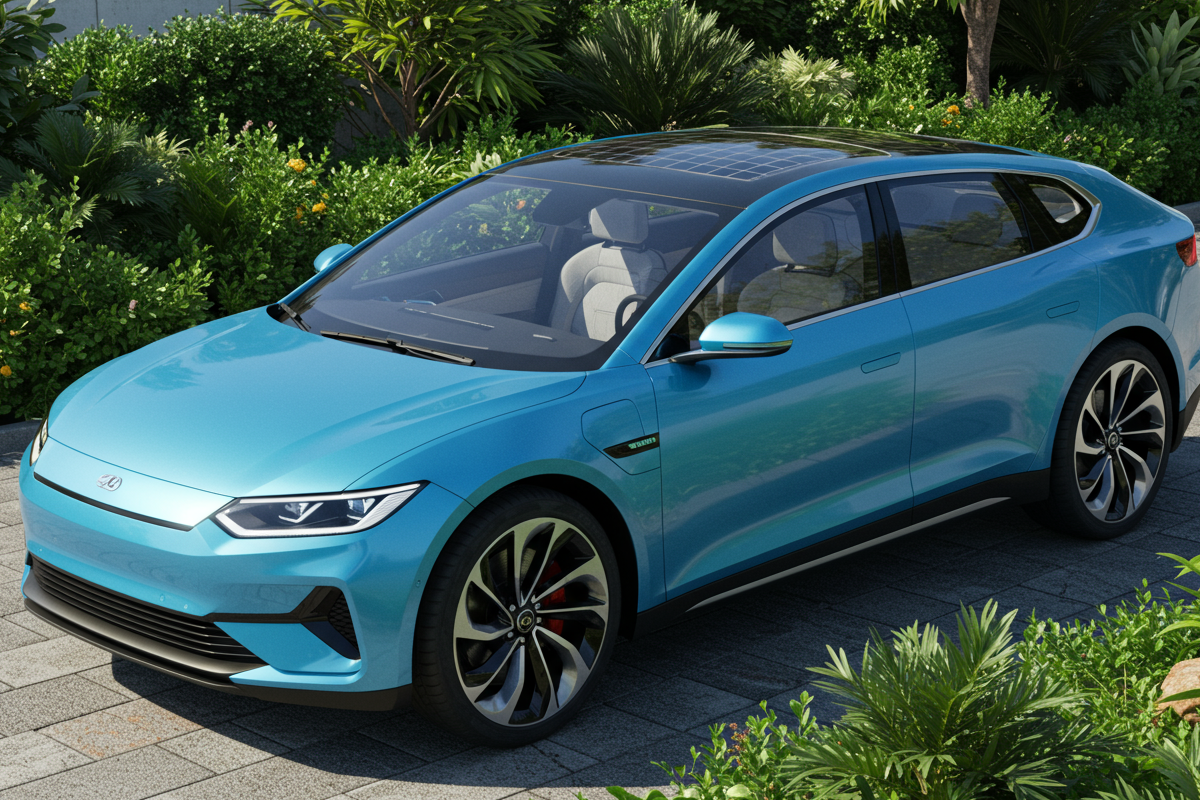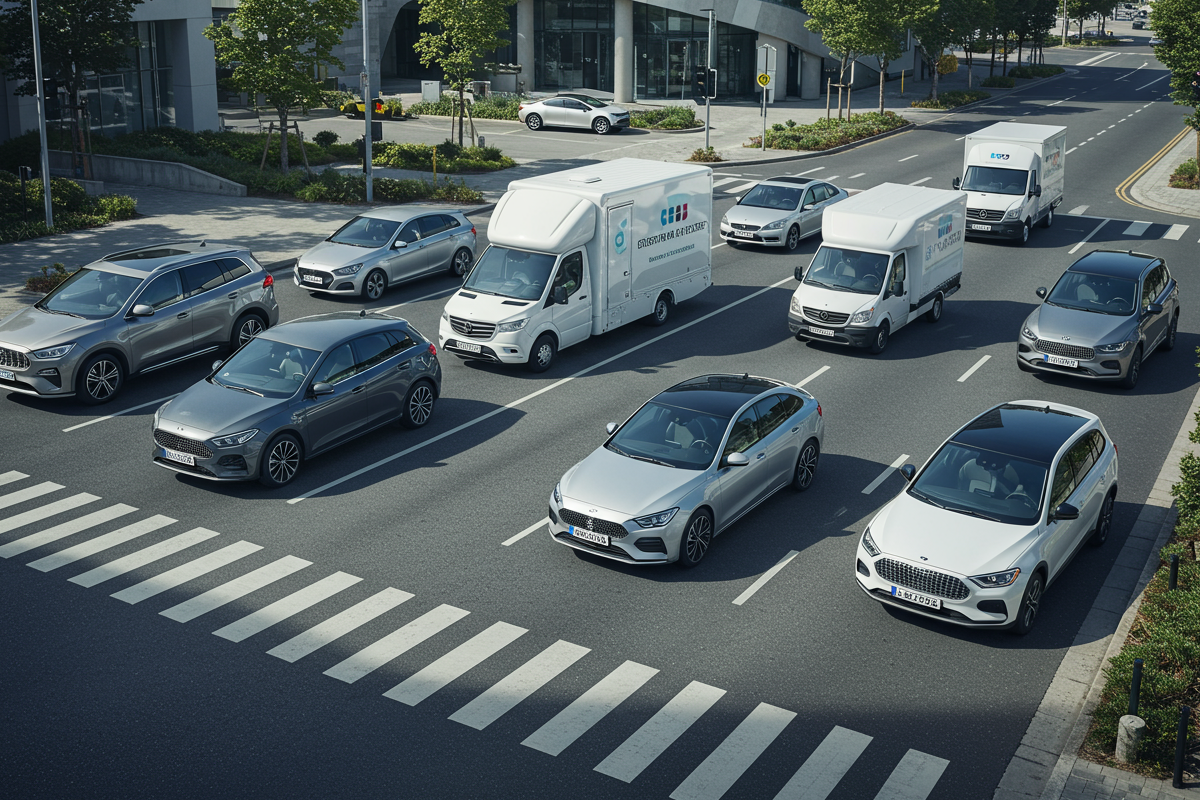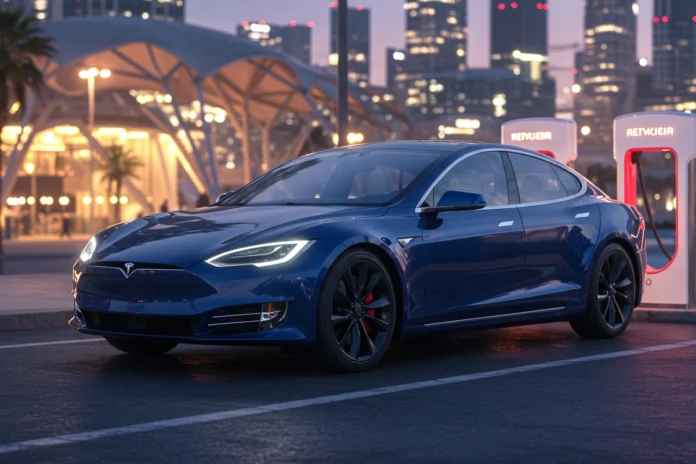Explore the historical evolution of electric vehicles (EVs) from the 19th century to the present day, highlighting key technological advancements and their impact on sustainability. This post delves into how innovations in battery technology, infrastructure, and consumer trends are shaping the future of transportation. With a focus on environmental benefits, including reduced emissions and improved urban air quality, the article outlines the crucial role of policies and technological innovations in fostering a green automotive landscape. Join us on a journey through the rise of electric vehicles and their pivotal role in promoting eco-friendly transport solutions.
The Rise of Electric Vehicles: A Historical Perspective
The history of electric vehicles (EVs) stretches back to the early 19th century, marking a significant evolution in the automotive landscape. The first crude electric cars were developed in the 1830s, but it wasn’t until the late 19th century that electric propulsion began gaining traction, with inventors like Thomas Parker creating practical models in 1889. This early fascination with green vehicles continued into the early 20th century, where electric taxis became popular in urban areas. However, with the rise of gasoline-powered vehicles, notably the Model T by Ford in 1913, the electric vehicle market suffered a decline, becoming almost obsolete for decades.
Fast forward to the late 20th century; growing environmental concerns and advancements in battery technology spurred a renewed interest in electric mobility. The oil crises of the 1970s contributed to a reevaluation of fuel consumption and environmental impacts, leading to governmental policies aimed at promoting eco-friendly transport. By the 1990s, companies like General Motors reintroduced electric options, albeit with limited success. It wasn’t until the 21st century that the EV revolution truly began to gain momentum, driven by technological advancements and a significant shift in consumer attitudes towards sustainability.
As we approached 2020, numerous milestones catalyzed the modern era of electric vehicles. Governments worldwide implemented stringent emissions regulations and substantial incentives for EV adoption, propelling the market forward. Additionally, major automotive manufacturers began investing heavily in research and development of electric models, resulting in a diverse market offering. The introduction of Tesla’s Model S in 2012 showcased the potential for EVs to combine performance and sustainability, significantly impacting consumer perceptions. As we approach 2025, the landscape continues to evolve with advancements in charging infrastructure and battery technology, solidifying the foundation for a future dominated by sustainable mobility and green vehicles.

Technological Innovations Driving the EV Market
The evolution of electric vehicles (EVs) is significantly propelled by continuous technological advancements that are reshaping the automotive landscape as we approach 2025. A key area of innovation is battery technology, where researchers have made considerable strides in developing batteries that are lighter, more efficient, and capable of storing greater energy. These advancements not only extend the driving range of green vehicles but also reduce charging time. The introduction of solid-state batteries, for example, promises to enhance safety while enabling faster charging capabilities compared to traditional lithium-ion batteries.
In addition to battery improvements, charging solutions have also evolved remarkably. Fast-charging stations are being integrated into the infrastructure of smart cities, ensuring seamless and convenient access to charging facilities. Companies are investing heavily in renewable energy sources to power these charging stations, further enhancing the eco-friendly nature of electric transport and demonstrating a commitment to sustainable mobility. Wireless charging technologies are emerging as a promising alternative, allowing EVs to charge effortlessly while parked or even on the move.
The incorporation of artificial intelligence (AI) into vehicle systems is another game-changing innovation. AI enhances navigation, predictive maintenance, and autonomous driving capabilities, making eco-friendly transport not only safer but also more efficient. By analyzing traffic patterns and optimizing routes, AI contributes to reduced energy consumption and improved overall vehicle performance. Furthermore, the collection of data from connected EVs supports the development of better infrastructure and smarter transportation networks, encouraging the broader adoption of electric vehicles.
These technological innovations are central to the ongoing EV revolution, driving automotive trends that prioritize sustainability, performance, and user satisfaction. As we move forward, the synergy of advanced technologies with green vehicles will play an essential role in shaping the future of transportation.
Environmental Impact and Sustainability of EVs
The shift towards electric vehicles (EVs) represents a crucial development in sustainable mobility, offering significant benefits compared to traditional internal combustion engine vehicles. One of the foremost advantages of EVs is their potential to reduce greenhouse gas emissions. Unlike conventional vehicles that rely on fossil fuels, electric vehicles produce zero tailpipe emissions. This fundamental difference means that as more individuals adopt eco-friendly transport options, there is a noticeable decrease in carbon footprints, contributing to the fight against climate change.
Moreover, the environmental impact of EVs extends beyond their operational emissions. The process of manufacturing the batteries that power these vehicles has seen significant advancements, aiming for greater sustainability. Battery production traditionally raises concerns regarding resource extraction and energy use. However, manufacturers are increasingly adopting greener practices, utilizing recycled materials and investing in technologies that minimize the environmental footprint. Furthermore, the lifecycle of EV batteries includes potential recycling processes that reclaim valuable materials, thus promoting a circular economy in the automotive industry.
Another noteworthy aspect of the EV revolution is its positive effect on urban air quality. In densely populated areas, traditional vehicles are significant contributors to air pollution, causing a range of health issues among residents. The transition to green vehicles promises not only cleaner air but also a better quality of life in urban settings. As cities move towards a more significant allocation of EVs in public transportation and personal use, the reduction in airborne pollutants can lead to improved health outcomes and enhanced urban living conditions.
In conclusion, the environmental impact of electric vehicles is multifaceted, encompassing reduced emissions, sustainable battery production, and improved urban air quality. The adoption of EVs is a pivotal step towards embracing eco-friendly transport and promoting the principles of sustainable mobility, setting a course towards a greener planet.

The Future of Transportation: Policy, Infrastructure, and Consumer Trends
The landscape of transportation in 2025 is poised to undergo a radical transformation, primarily driven by the proliferation of electric vehicles (EVs) and a collective shift towards sustainable mobility. Governments around the world are recognizing the critical role of regulatory frameworks and policies in facilitating the adoption of green vehicles. Incentives such as tax rebates, subsidies, and favorable zoning laws are being implemented to encourage consumers and manufacturers alike to embrace eco-friendly transport solutions. These initiatives are designed to reduce carbon emissions and contribute to a greener environment.
Furthermore, an essential aspect of fostering the EV revolution is the enhancement of charging infrastructure. A robust network of public and private charging stations is vital for alleviating “range anxiety” among potential EV buyers. By 2025, cities are expected to have expanded their charging capabilities significantly, ensuring that charging points are conveniently located throughout urban areas and along major highways. This investment in infrastructure will not only support increased EV usage but also shift consumer perceptions about electric vehicles, moving them into the mainstream as viable alternatives to traditional fossil fuel-powered cars.
In addition to policy support and charging infrastructure development, emerging consumer trends reveal a growing preference for sustainable mobility solutions. New generations of car buyers are prioritizing environmental considerations in their purchasing decisions, favoring brands and models that align with eco-conscious values. The automotive trends observed today suggest that consumers are becoming increasingly aware of the impact of their transport choices on climate change. Consequently, public transport systems are also adapting by incorporating electrification and sustainability practices, reshaping urban planning and the overall approach to transportation.
As these elements converge, the transportation sector is on the brink of a comprehensive shift that not only enhances our mobility options but also significantly contributes to a sustainable future.




